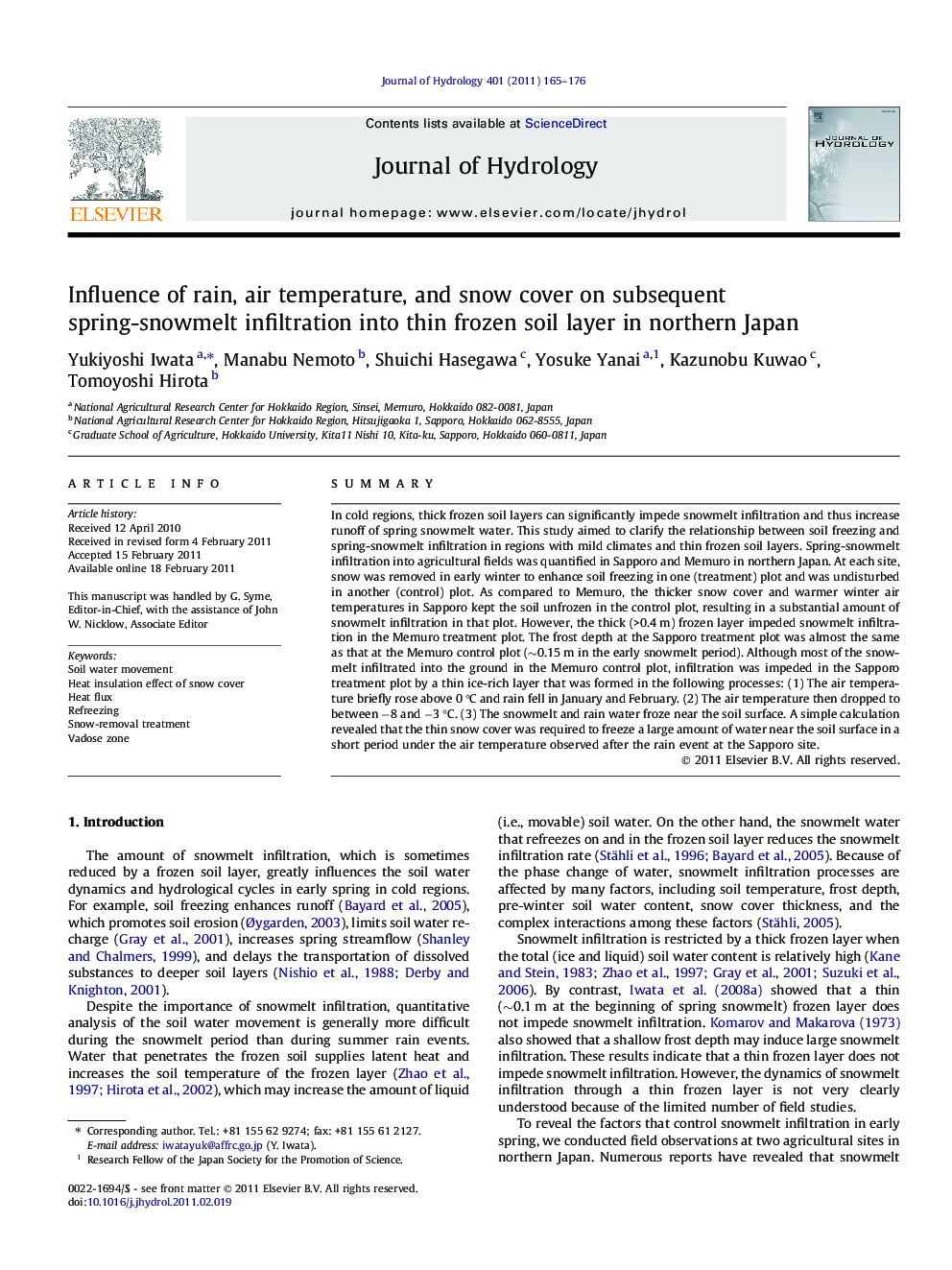| کد مقاله | کد نشریه | سال انتشار | مقاله انگلیسی | نسخه تمام متن |
|---|---|---|---|---|
| 4577747 | 1630025 | 2011 | 12 صفحه PDF | دانلود رایگان |

SummaryIn cold regions, thick frozen soil layers can significantly impede snowmelt infiltration and thus increase runoff of spring snowmelt water. This study aimed to clarify the relationship between soil freezing and spring-snowmelt infiltration in regions with mild climates and thin frozen soil layers. Spring-snowmelt infiltration into agricultural fields was quantified in Sapporo and Memuro in northern Japan. At each site, snow was removed in early winter to enhance soil freezing in one (treatment) plot and was undisturbed in another (control) plot. As compared to Memuro, the thicker snow cover and warmer winter air temperatures in Sapporo kept the soil unfrozen in the control plot, resulting in a substantial amount of snowmelt infiltration in that plot. However, the thick (>0.4 m) frozen layer impeded snowmelt infiltration in the Memuro treatment plot. The frost depth at the Sapporo treatment plot was almost the same as that at the Memuro control plot (∼0.15 m in the early snowmelt period). Although most of the snowmelt infiltrated into the ground in the Memuro control plot, infiltration was impeded in the Sapporo treatment plot by a thin ice-rich layer that was formed in the following processes: (1) The air temperature briefly rose above 0 °C and rain fell in January and February. (2) The air temperature then dropped to between −8 and −3 °C. (3) The snowmelt and rain water froze near the soil surface. A simple calculation revealed that the thin snow cover was required to freeze a large amount of water near the soil surface in a short period under the air temperature observed after the rain event at the Sapporo site.
Research highlights
► Temporal liquid precipitation in cold winter can increase ice in/on the ground.
► A lot of ice impeded snowmelt infiltration even though it is not thick (∼0.15 m).
► Thin snow cover is required to freeze large amount of water near the ground surface.
Journal: Journal of Hydrology - Volume 401, Issues 3–4, 3 May 2011, Pages 165–176